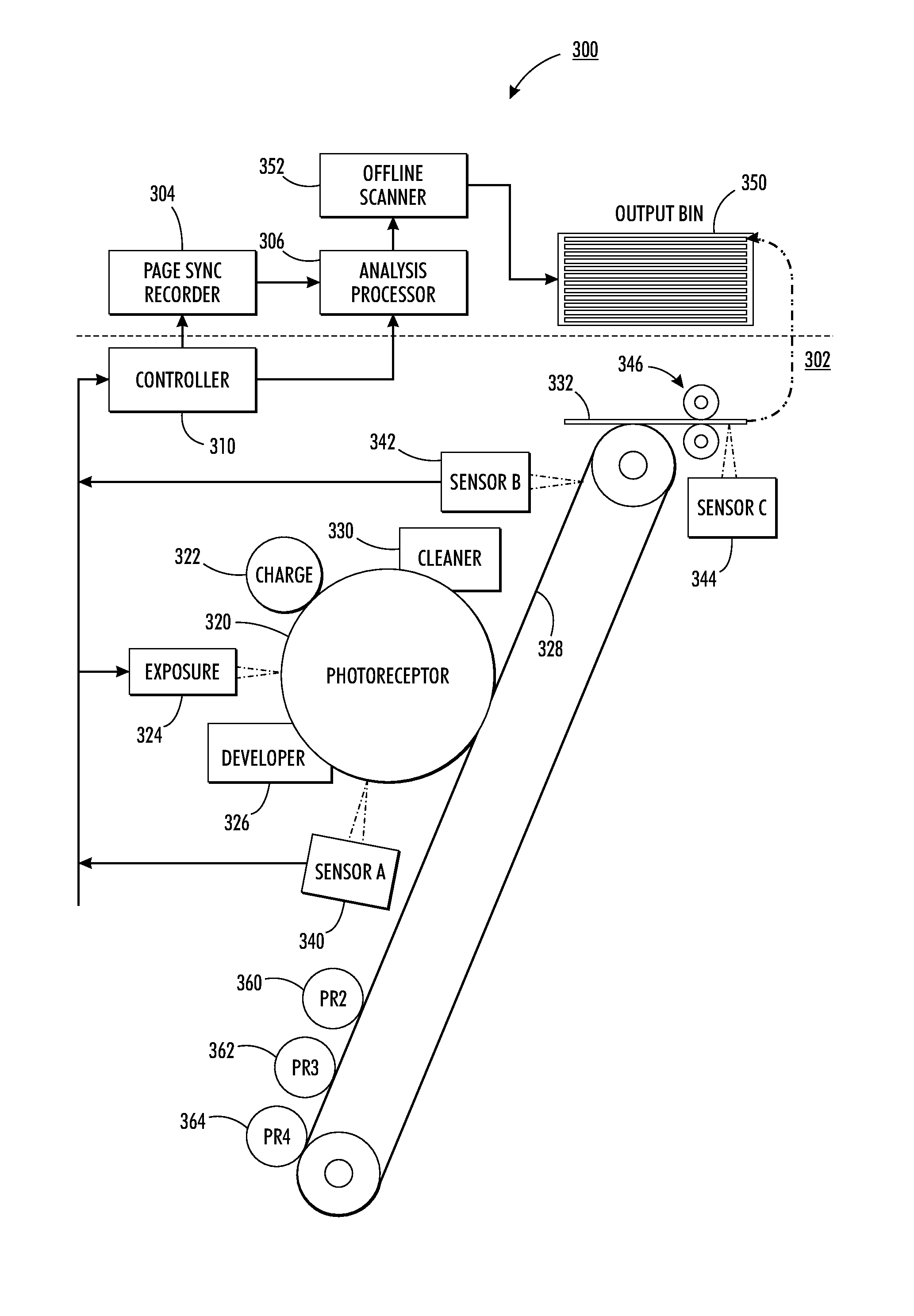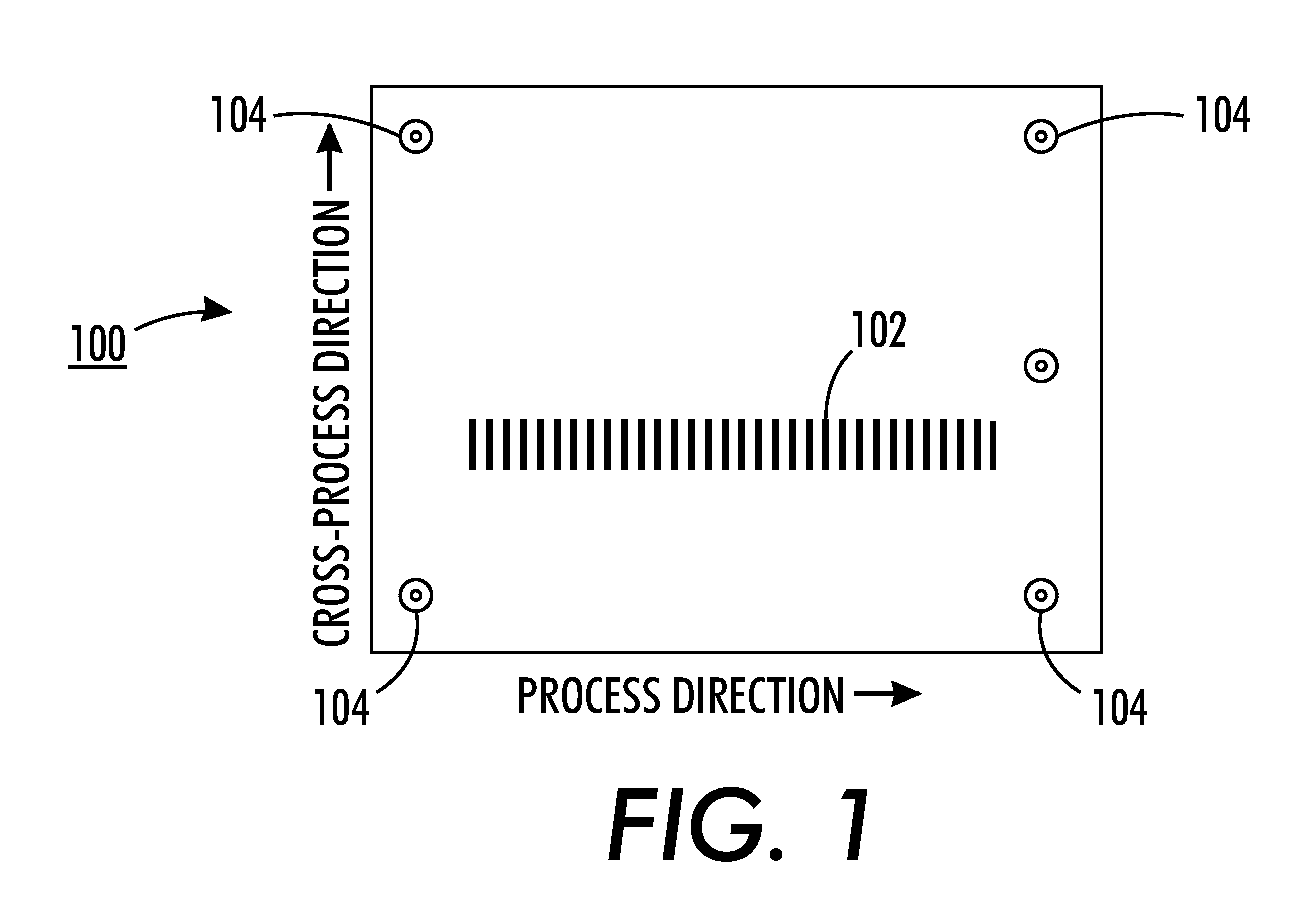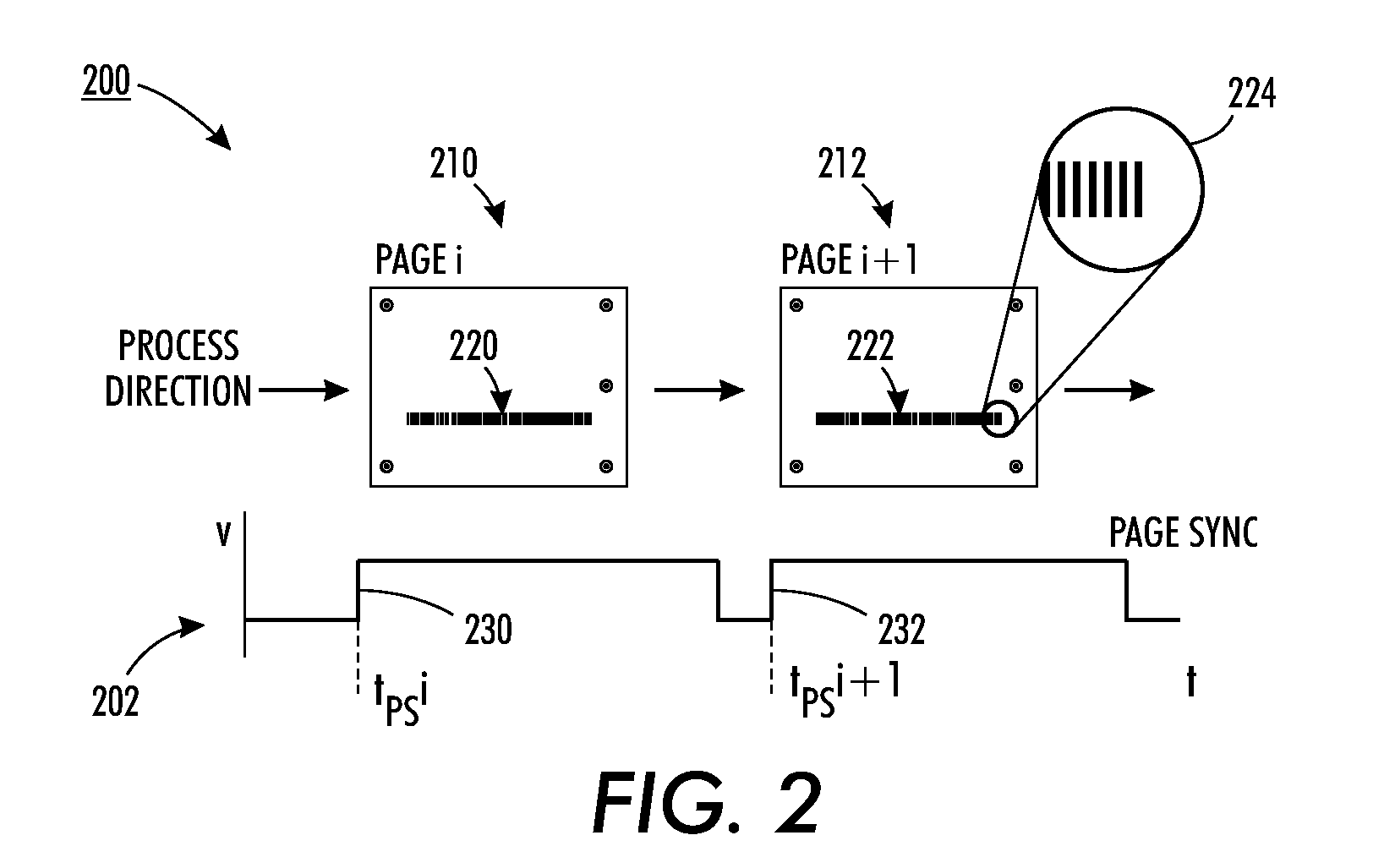Photoreceptor motion quality estimation using multiple sampling intervals
a photoreceptor and sampling interval technology, applied in the direction of multiple dynamo-motor starters, dynamo-electric converter control, instruments, etc., can solve the problems of “banding” defect appearing on the printed page, non-uniform density in the direction of the printing process, and limited current techniques for photoreceptor motion quality estimation through the use of printed ladder charts
- Summary
- Abstract
- Description
- Claims
- Application Information
AI Technical Summary
Benefits of technology
Problems solved by technology
Method used
Image
Examples
example printed
Target Pages
[0021]Reference is now made to FIG. 1 which illustrates an example ladder test target page containing a ladder chart target as utilized by one embodiment of the present method for determining photoreceptor motion quality.
[0022]In FIG. 1, the example ladder test target page 100 includes ladder chart target 102 which consists of a series of short line segments in the cross-process direction. The illustrated example ladder chart target includes a number of lines that are uniformly spaced in the process direction, such as in a 1-pixel-on, 11-pixel-off pattern. Such a 1-pixel-on, 11-pixel-off pattern therefore has a period of 12 pixels. This pattern forms a “ladder” in the process direction with image components that are transverse to a motion of the photoreceptor. Since the rungs of the ladder repeat at a constant integer number of scan lines, which generally correspond to a number of printed pixels, the rungs are imaged onto the photoreceptor at equal time intervals and inc...
PUM
 Login to View More
Login to View More Abstract
Description
Claims
Application Information
 Login to View More
Login to View More - R&D
- Intellectual Property
- Life Sciences
- Materials
- Tech Scout
- Unparalleled Data Quality
- Higher Quality Content
- 60% Fewer Hallucinations
Browse by: Latest US Patents, China's latest patents, Technical Efficacy Thesaurus, Application Domain, Technology Topic, Popular Technical Reports.
© 2025 PatSnap. All rights reserved.Legal|Privacy policy|Modern Slavery Act Transparency Statement|Sitemap|About US| Contact US: help@patsnap.com



